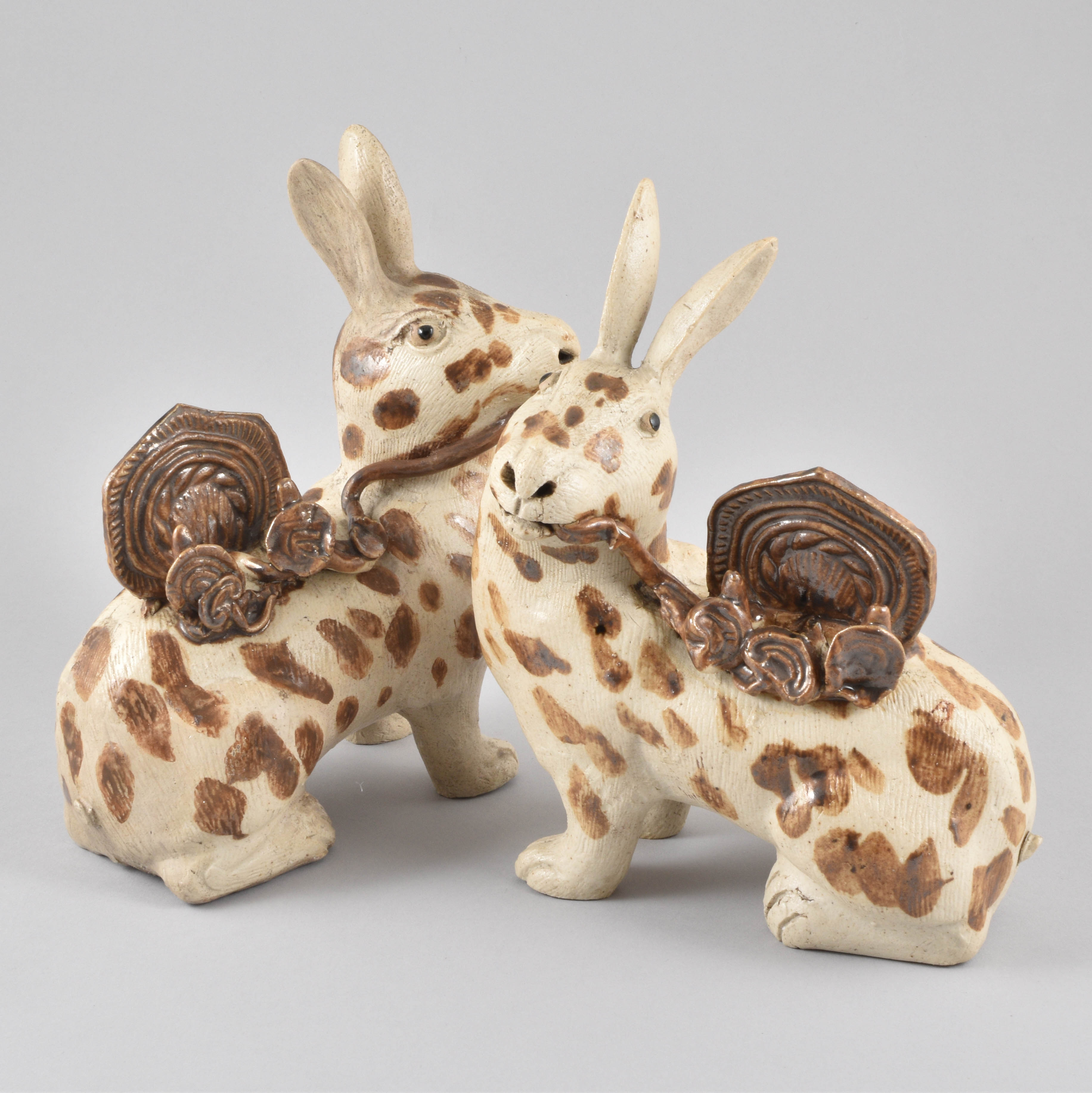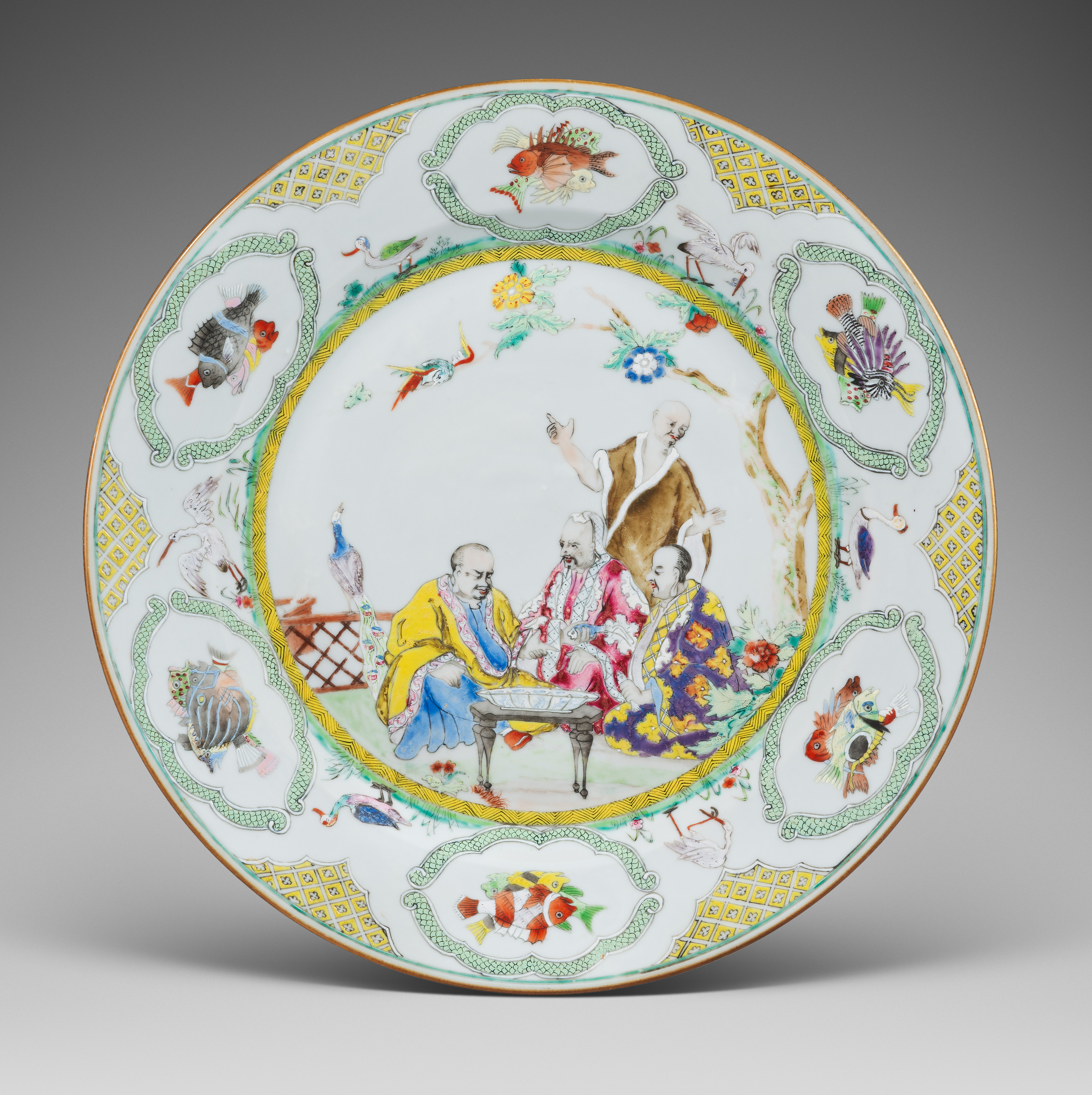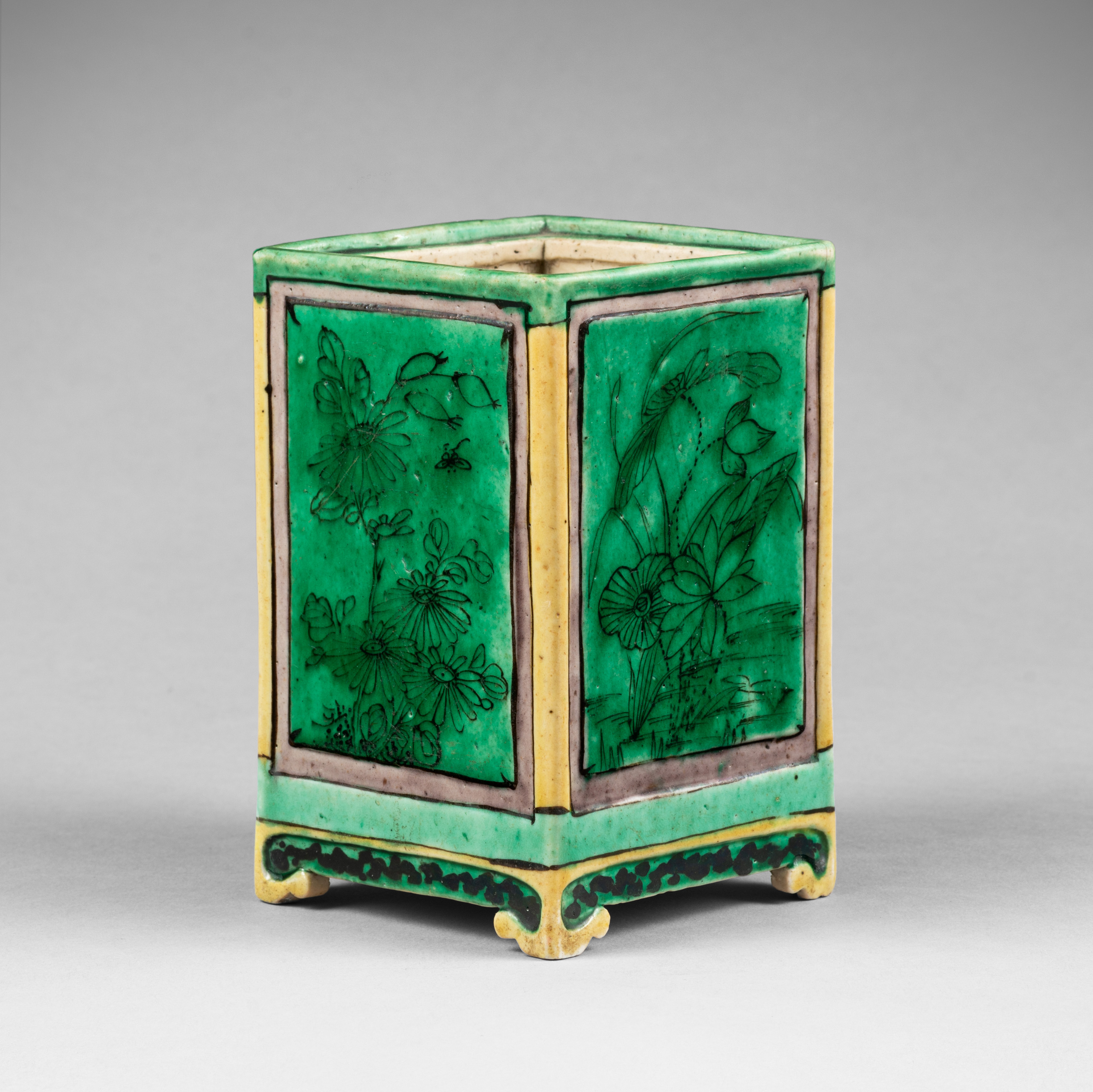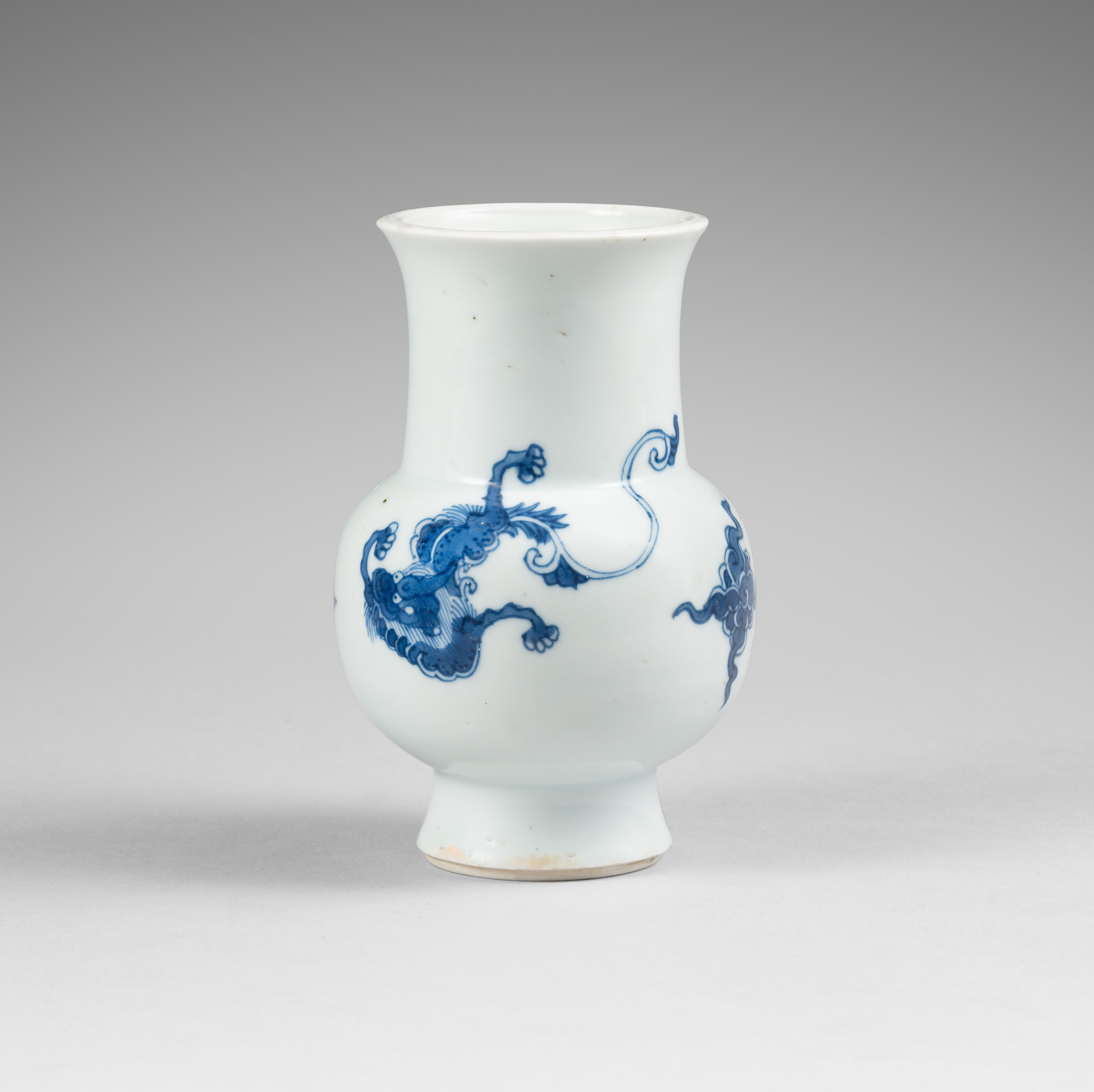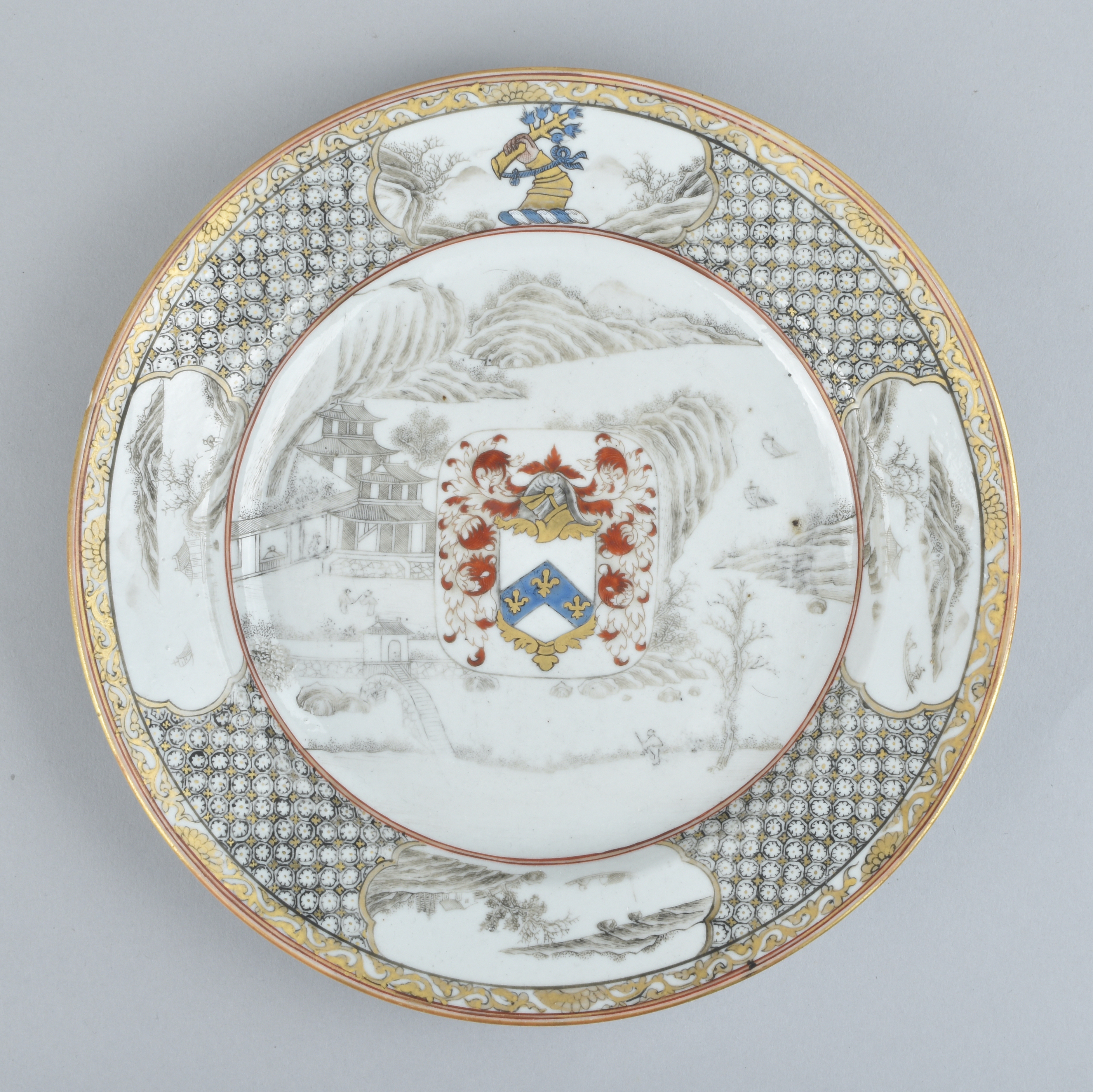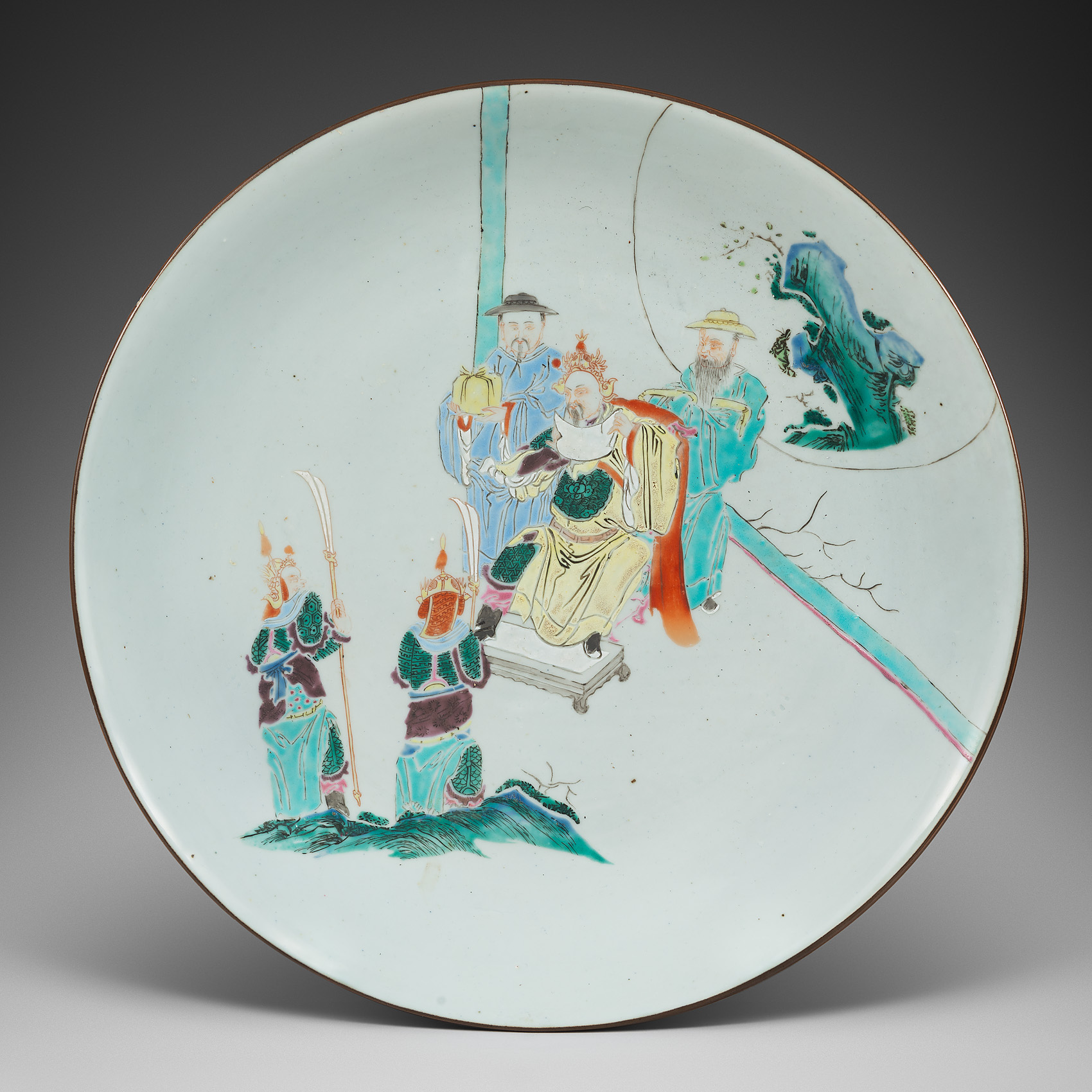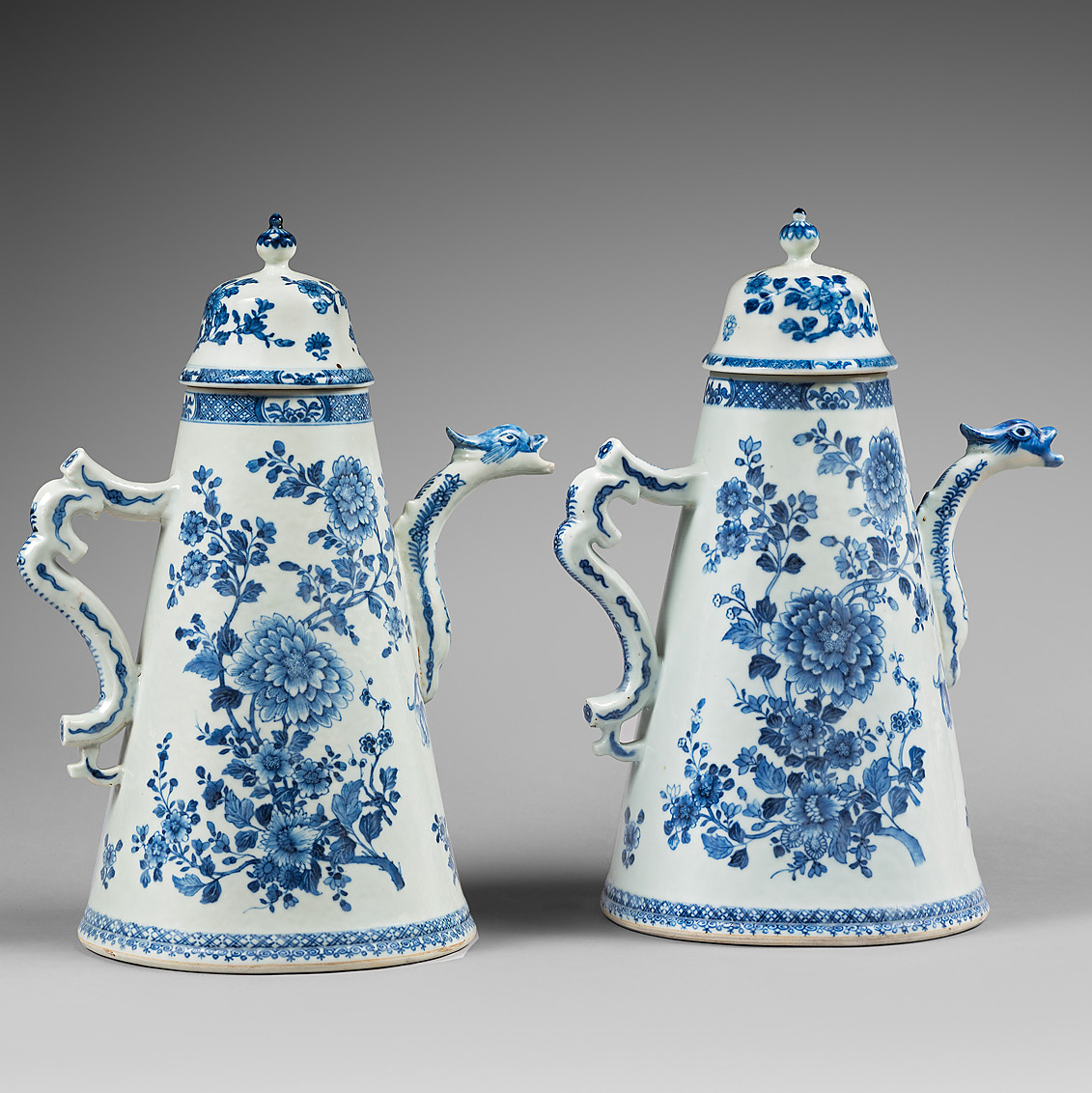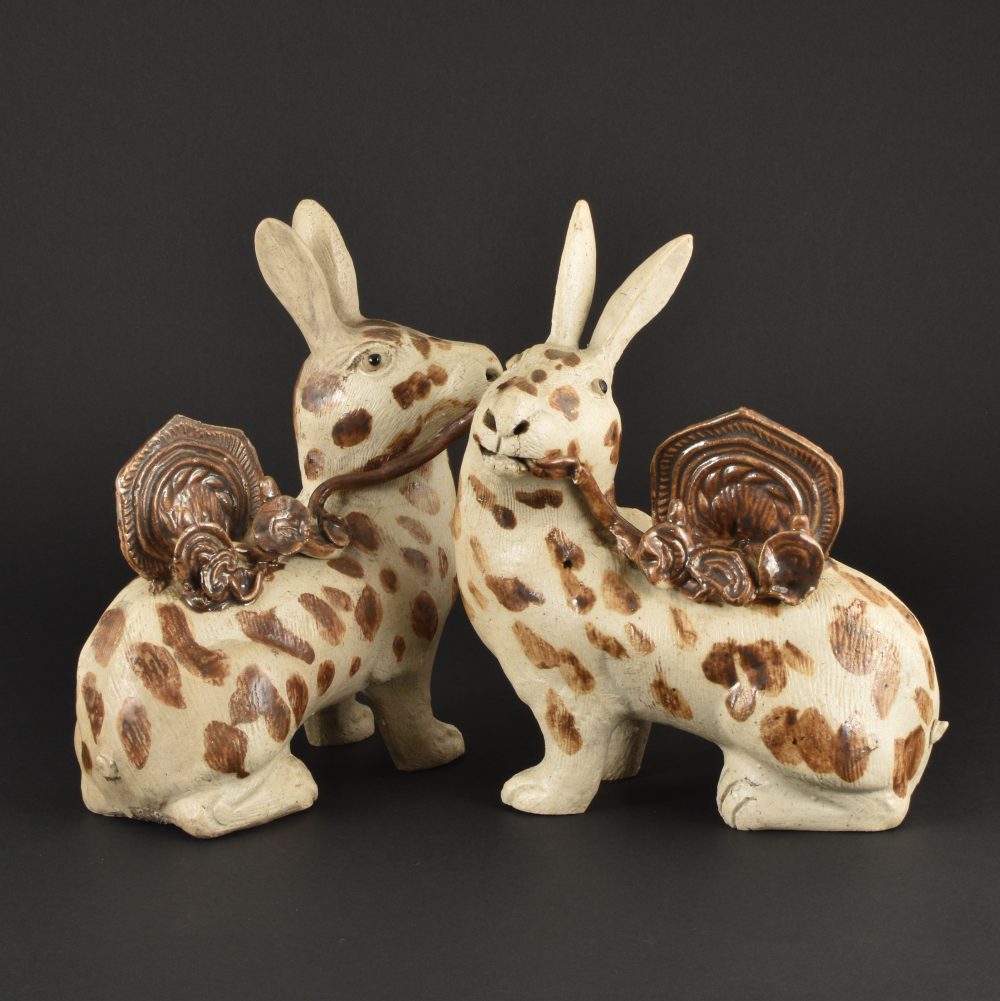
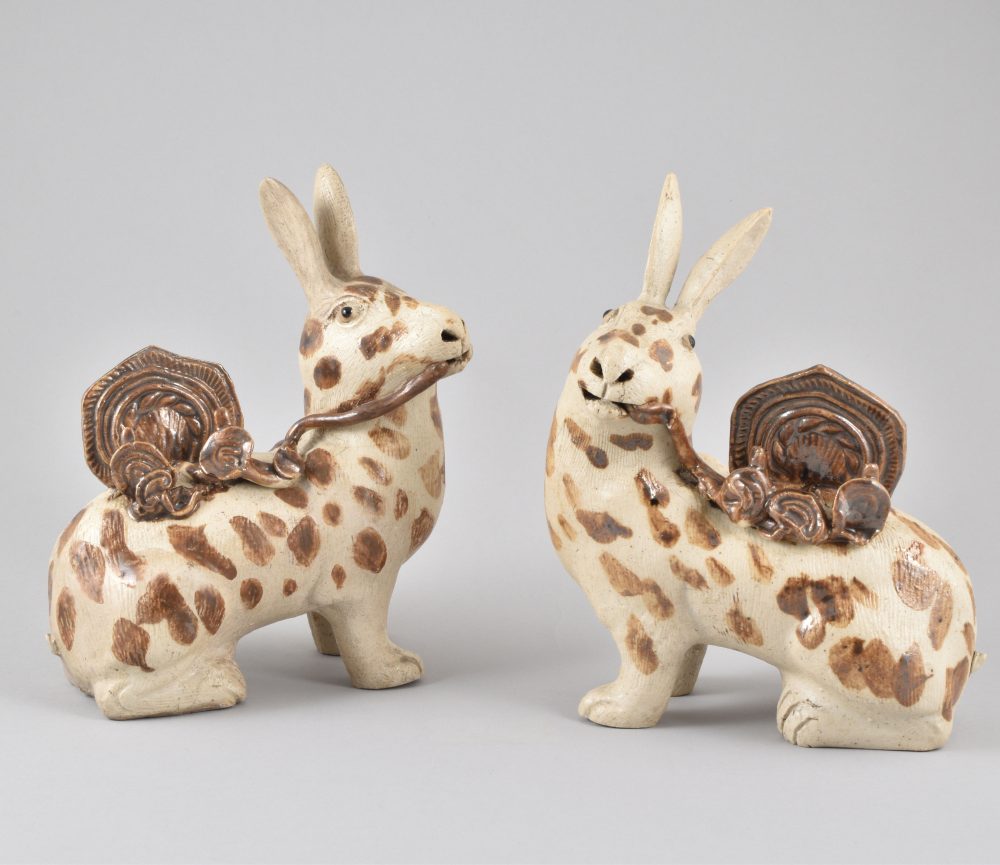
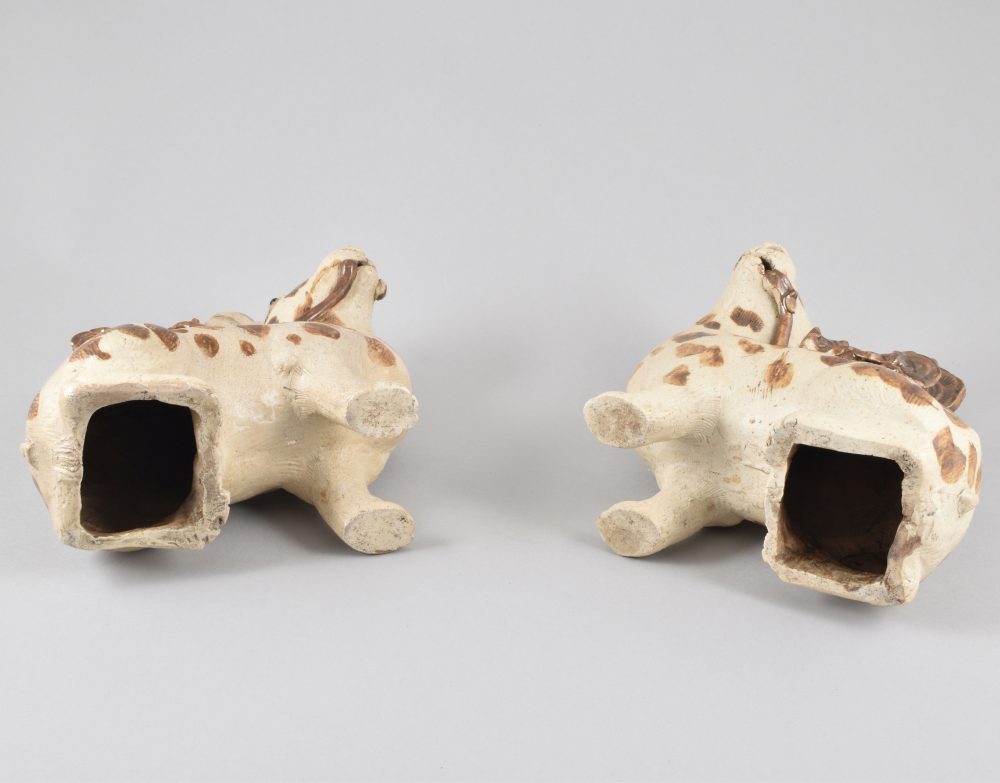
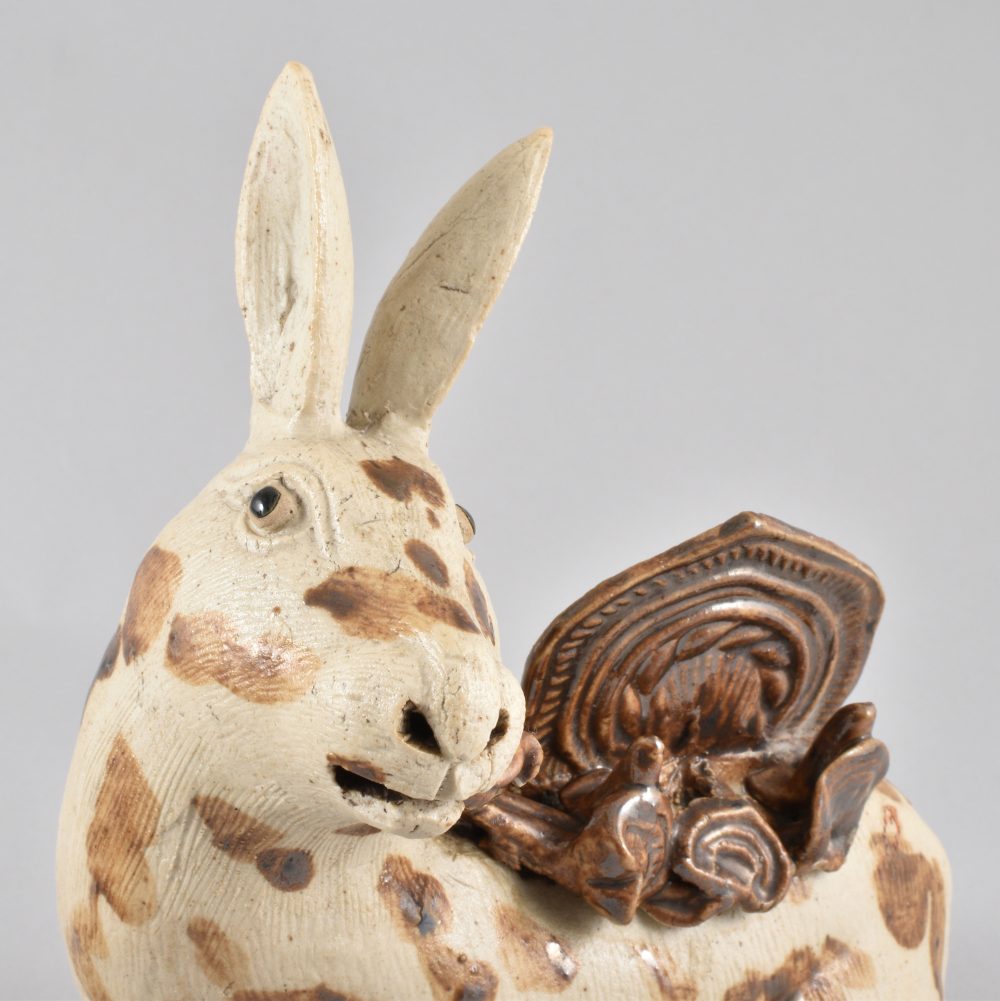
A pair of Chinese Export biscuit hares. Late Qianlong period
Each seated on its haunches, with its head turned on the right for the first, on the left for the second, with the ears pricked up and holding a lingzhi-branch in the snout, the branch and a shell attached to the back, and decorated with caramel marking on the biscuit, the body incised to imitate fur.
- Country:
- China
- Period :
- Qianlong (1735-1795)
- Material:
- Porcelain
- Dimension:
- 8.26 in. (21 cm)
- Reference :
- C581
- Status:
- sold
Related works
For a pair of very similar rabbits but with a beige/white coat, see Christie’s London, Chinese Ceramics, Works of Art and Chinese Export Ceramics, 15 june 1999, lot 217.
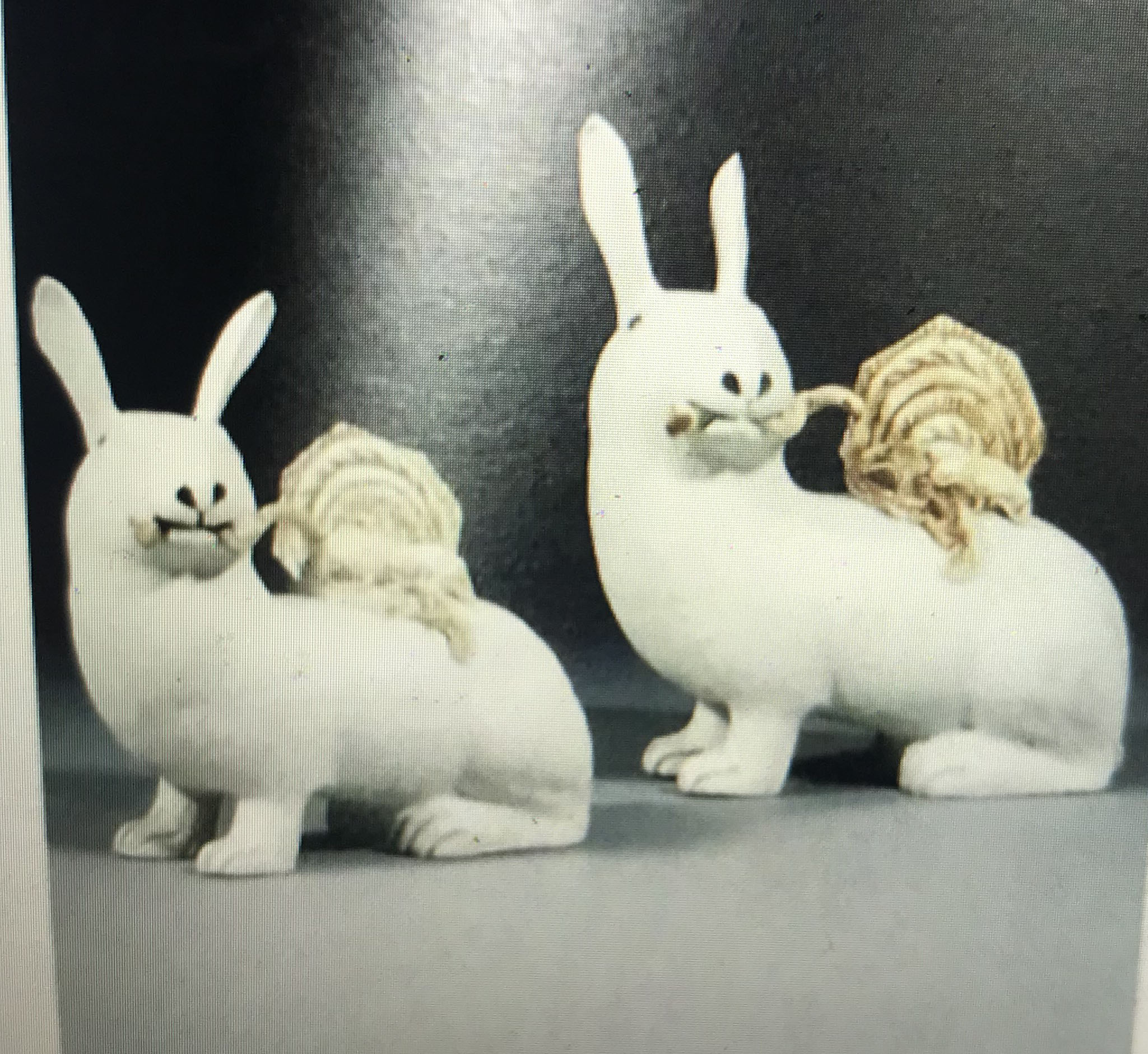
For a pair of pekinese dogs (most commonly animal found) with the same caramel patches on the biscuit, see christie’s London, Fine Chinese Export Ceramics and Works of Art, 16 november 1999, lot 320.
Notice
An early Chinese source called the Chu Ci, a Western Han anthology of Chinese poems from the Warring States period, notes that along with a toad, there is a hare on the Moon who constantly pounds herbs for the immortals. His pouding on the herbs is the explanation for the craters on the moon. This notion is supported by later texts, including the Song-era Taiping Imperial Reader. As rabbits were not yet introduced to China during Western Han, the original image was not a rabbit but a hare. Han Dynasty poets call the hare on the Moon the “Jade Hare” or the “Gold Hare”, and these phrases were used often, in place of the word for the Moon.
The hare is the companion of Chang’e, the moon goddess. She was the wife of Houyi, who had travelled to the ends of the earth to find the pill of immortality. Eventually he was given it by Xi Wang Mu, Queen Mother of the West, and when he returned home he left it with his wife in a special casket. As with Pandora’s Box in Greek mythology, Chang’e could not resist opening it and, fearing discovery upon her husband’s sudden return, she swallowed the whole pill, overdosing on immortality. Consequently she floated heavenward and eventually landed on the moon, where she was trapped with a jade hare who was furious mixing herbs with a pestle and mortar to create the Elixir of Life for the immortals.
Daoist believe that the lingzhi has been used extensively in Chinese medicine. The motifs or patterns of lingzhi are quite popular in the Chinese decorative arts symbolizing longevity and health. In Buddhist traditions, the rabbit/hare is also important, symbolizing self-sacrifice and virtue, as well as longevity.
